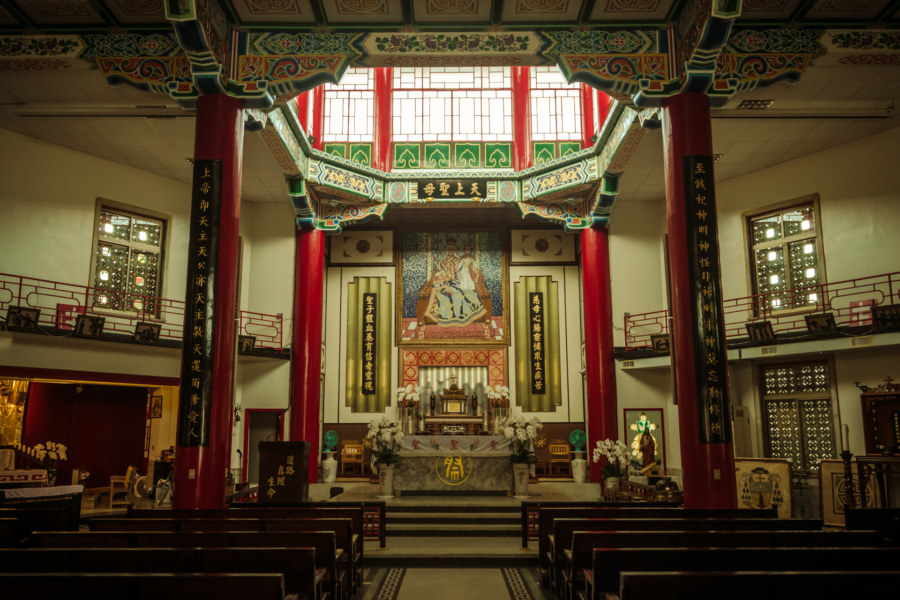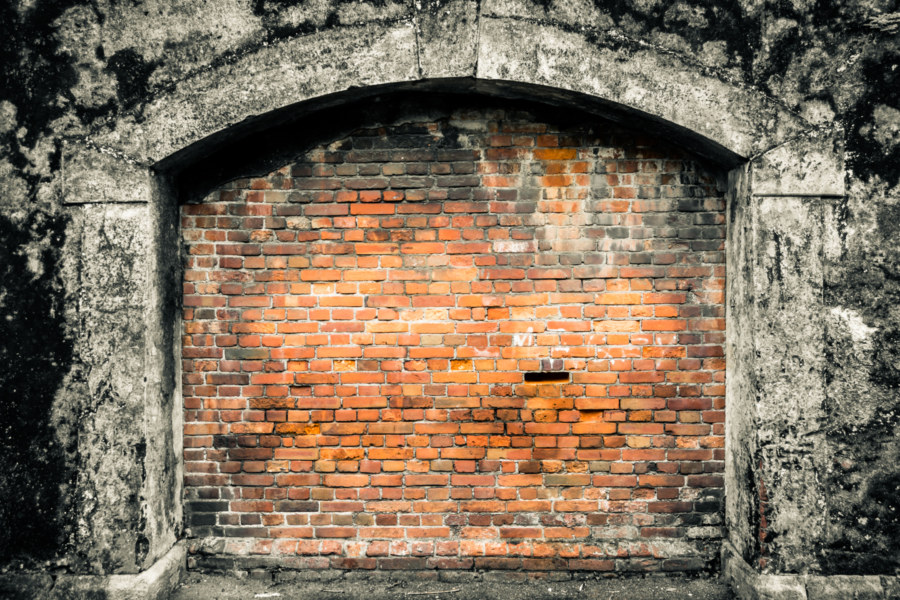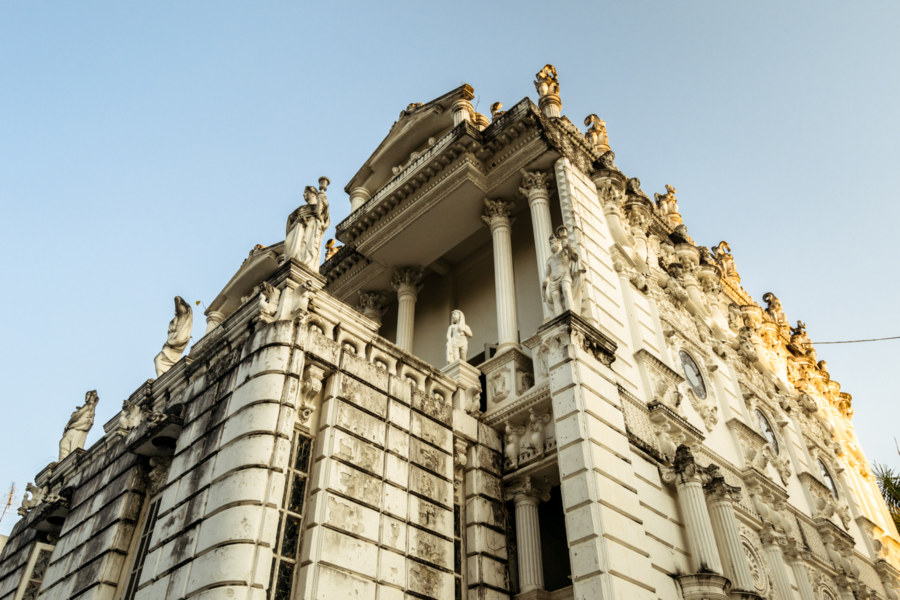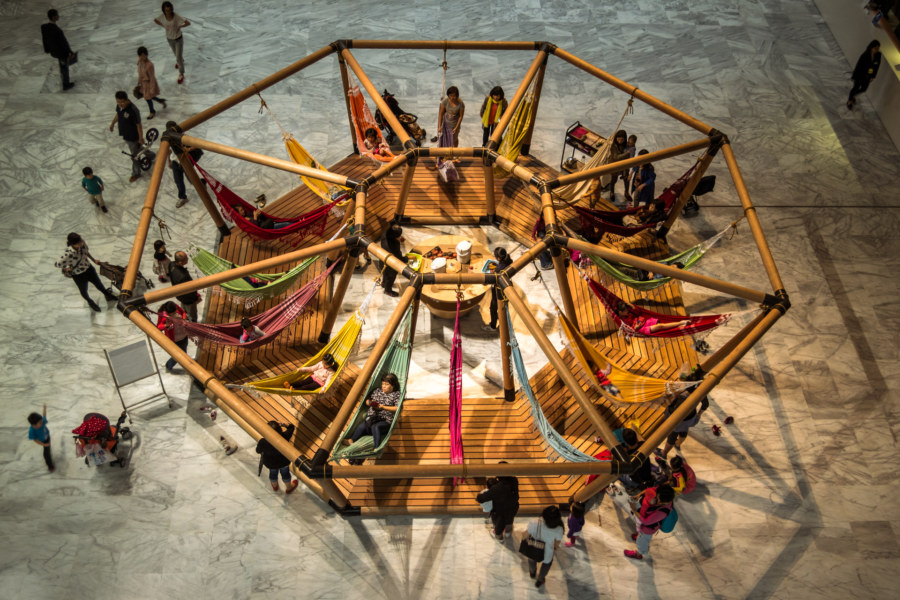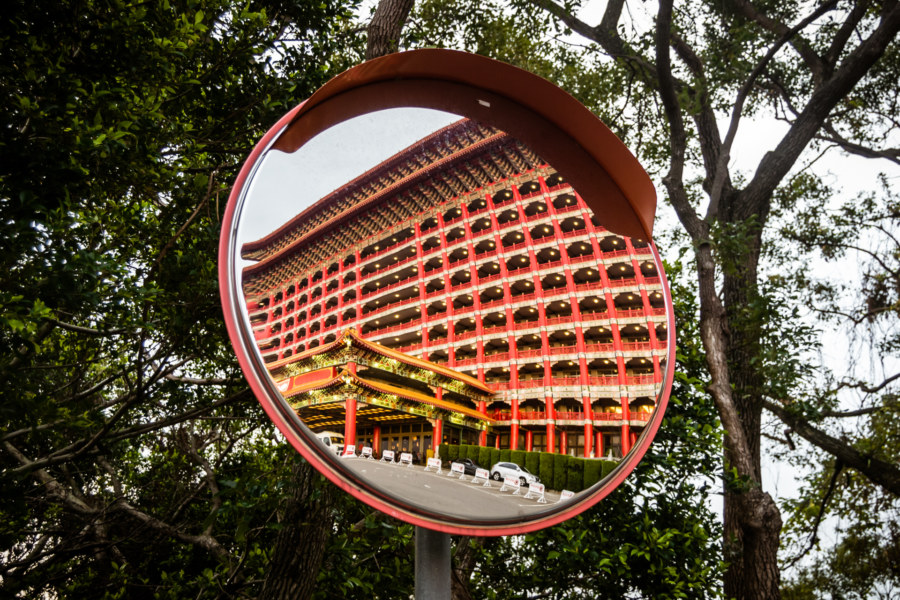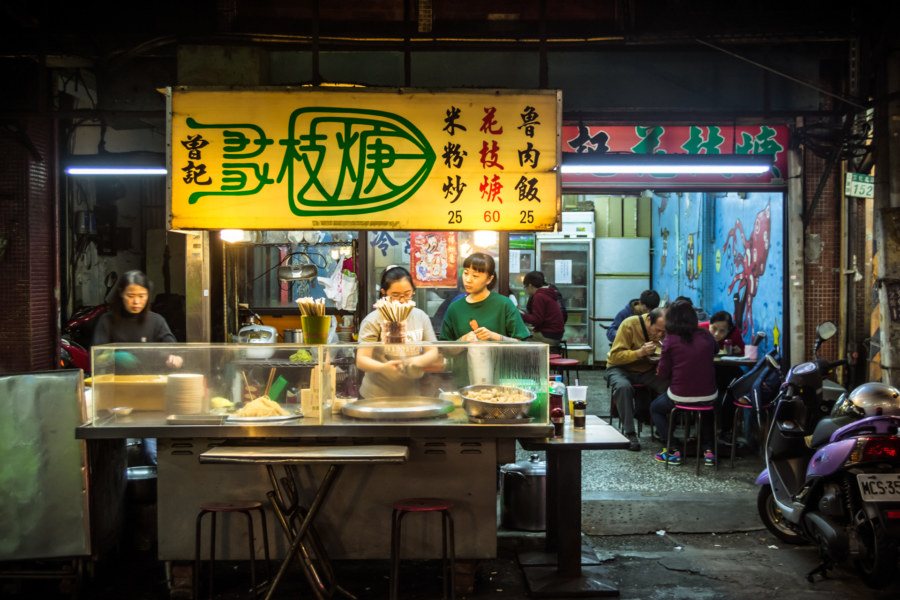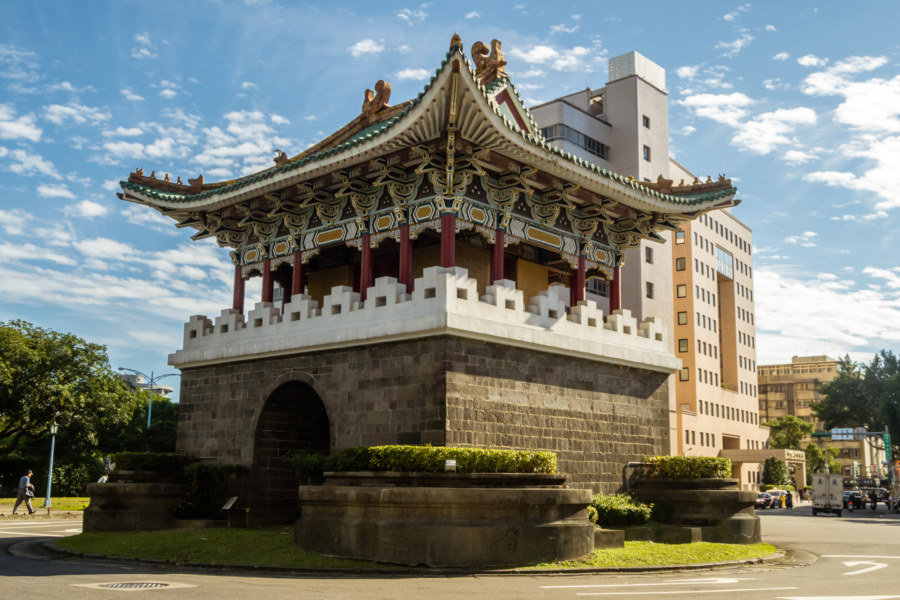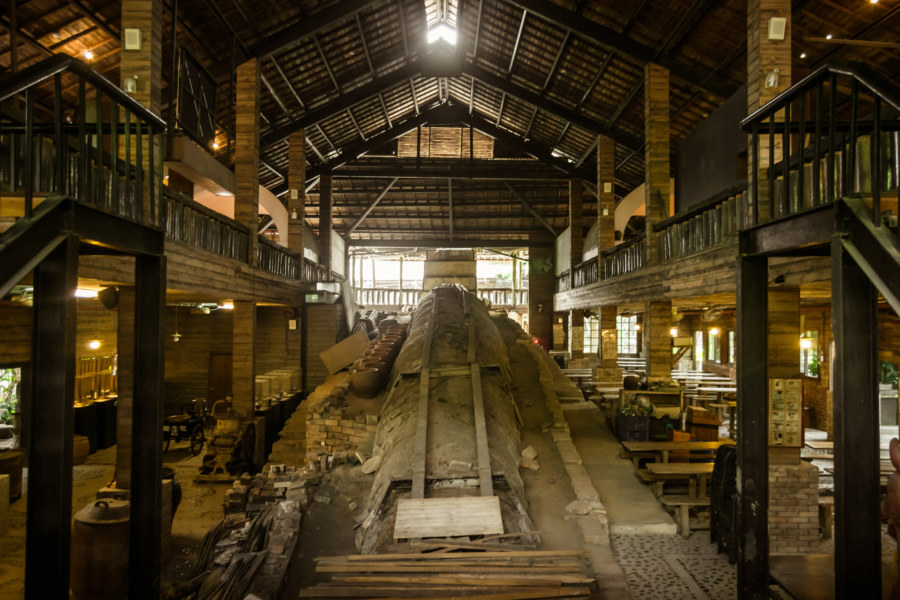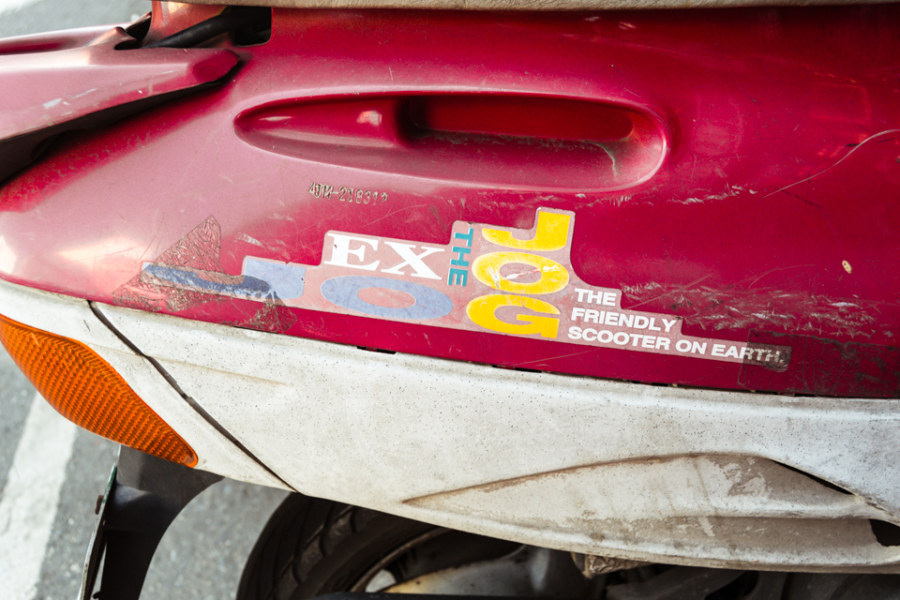Back when I was living in Tainan I made an effort to check out many of the temples I encounter in my daily travels around town. One day after breakfast, while riding along Kāishān Road (開山路), I stopped to check out what looked to be yet another temple across the street from the Koxinga Shrine (延平郡王祠). I was surprised to learn that despite the palatial Chinese architecture and seemingly traditional style of design this is a Catholic church, officially Our Lady Queen of China Cathedral (中華聖母主教座堂). Built in 1963, it is the top-ranking church in the Roman Catholic Diocese of Tainan (天主教台南教區). The name is derived from Our Lady of China (中華聖母), an apparition of Mary that took place during the Boxer Rebellion (義和團運動) in China in 1900.
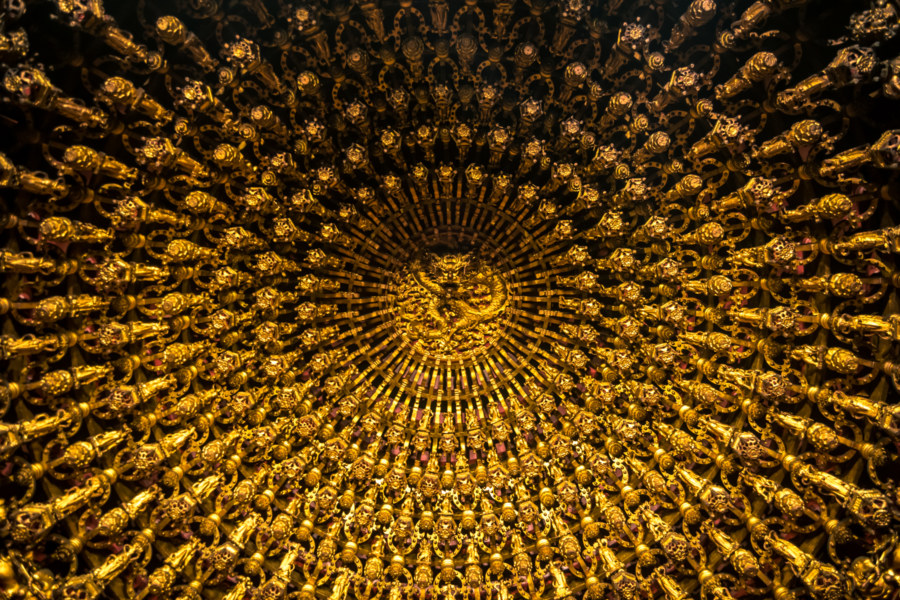
Cultural observations, insight, and confusion.
The Remains of Taipei Prison 臺北監獄圍牆遺蹟
Not much remains of the old Taipei Prison (台北刑務所) except the walls along the north and south sides of the prison grounds. Originally known as Taihoku Prison (after the Japanese name for Taipei), it was built in 1904 to incarcerate a burgeoning population of political dissidents, revolutionaries, and activists resisting Japanese colonial rule, though the authorities also imprisoned common criminals here as well. It was also the scene of the needless execution of 14 American soldiers a mere 58 days before the end of World War II. The KMT continued to operate the prison into the bleak years of the White Terror (白色恐怖) before razing it to the ground in 1963.
White Lion House, Chiang Mai
Last year I shared my exploration of the House of Success, an extravagant palatial ruin in the northwest corner of Chiang Mai immediately inside the old city walls. In that post I noted that there were two additional buildings of a similar style at the same site, one an active business and the other occupied by squatters. Returning this year for a second visit I was surprised to see that the squatters had left. Wasting no time, I strode into the Jangmuarinnakorn House, more generally known as the White Lion House, to document a previously missing piece of the puzzle.
Taipei Biennial 2014: Art in the Age of the Anthropocene
Curated by Nicolas Bourriaud, the Taipei Biennial 2014 was held at the Taipei Fine Arts Museum (臺北市立美術館) in Zhongshan from September into the early part of the new year. The theme is “art in the age of the anthropocene”, the current geophysical epoch defined by humankind’s enormous impact on the natural world. From the curator’s notes: this exhibition is organized around the cohabitation of human consciousness with swarming animals, data processing, the rapid growth of plants and the slow movements of matter
. I am no serious critic but I certainly appreciate thought-provoking art when I see it. Since I haven’t any expertise in this area I’m mostly going to let the photos speak for themselves, however incomprehensible that might be. Much like the Xu Bing retrospective it was an inspiring experience so I’d like to have a record of it here on my blog.
Taipei Grand Hotel 圓山大飯店
Yesterday’s impromptu ride around the riverside bikeway network delivered me to the palatial Grand Hotel (Yuánshān Dàfàndiàn 圓山大飯店), a famous landmark in Zhongshan, Taipei. Located on a hilltop overlooking a bend of the Keelung River (基隆河), it was established in 1952 at the behest of generalissimo Chiang Kai-shek to provide the ruling elite with a luxurious place to host and entertain foreign dignitaries. The distinctive building seen in these photos was completed in 1973 and was the tallest building in the Free Area of the Republic of China until 1981.
Zhongyuan Theater 中源大戲院
Zhōngyuán Theater 中源大戲院 is a second-run theater located in the heart of Zhongyuan Night Market 中原夜市 in Zhongli, Taiwan. Zhongyuan Theater is ideally located next to the university of the same name amidst a huge population of budget-conscious students—which may explain why it remains in business unlike hundreds of other old theaters that have fallen into ruin in recent years, victims of changing consumer habits and strong competition from more modern multiplexes. Zhongyuan is also one of the very last theaters in the nation where you will find hand-painted movie posters hanging outside, a nostalgic practice more widely associated with Chin Men Theater 全美戲院 down in Tainan.
Archaic Squid Soup
I was wandering through Sānhé Night Market 三和夜市 on the first day of the new year when this small shop caught my eye. The formal name of the place is Céngjì Huāzhīgēng 曾記花枝羹 and, as the last three characters would suggest, they specialize in squid thick soup, a popular Taiwanese snack. The highly stylized characters on the signboard look something like seal script 篆書 to my inexpert eyes—with the last character, “gēng 羹”, swapped for the more traditional “焿”. Don’t ask me to make sense of that first character, mind you—it is enough to know that “huā 花” means flower.
Taipei Xiaonanmen 臺北府城小南門
Today is winter solstice, the shortest day of the year in the northern hemisphere, and it is a record-breaking 30°C in Taipei. In Chinese culture it is customary to consume tāngyuán (湯圓, glutinous rice balls typically immersed in hot, sweet soup) on winter solstice, better known to locals as Dōngzhì (冬至), a time when families gather together and celebrate growing one year older. Since I have no family here I will be lining up at 36 Yuánzǐ Shop (三六圓仔店) for a bowl sometime later on—though I might just skip this particular ritual if the line-up is too crazy. Two years ago I was informed, contrary to expectations, that you won’t actually age without eating tangyuan on dongzhi. If I miss it this year I suppose I won’t mind.
Shuili Snake Kiln 水里蛇窯
The Shuili Snake Kiln 水里蛇窯 is a wood-fired pottery kiln on the outskirts of Shuili, Nantou. The name is derived from the kiln’s serpentine shape, though to my eyes it looks more like a slug than a snake. Founded in 1927 by master potter Lín Jiāngsōng 林江松, it remained a family business for generations before being opened to the public as a “ceramics park” in 1993.
Taiwanese Scooter Stickers 1
Taiwan is absolutely mad for scooters, a consequence of high population density, tightly cramped streets, and the expense and inconvenience of driving a car. Everywhere you go you’ll find streets lined with parked scooters and filled with scooterists going about their business. In can all seem like absolute chaos to outsiders—but there is a method to the madness, and the convenience factor regularly seduces skeptics, particularly when living outside of Taipei or beyond the reach of public transportation.
